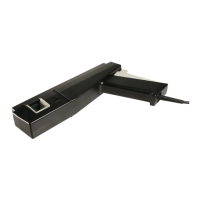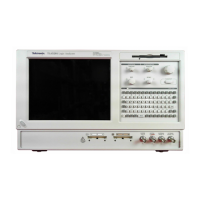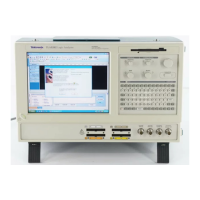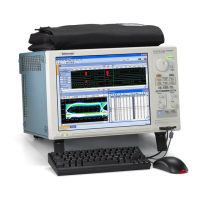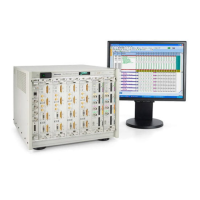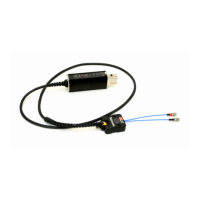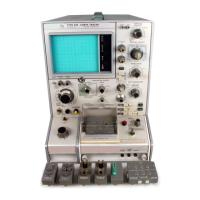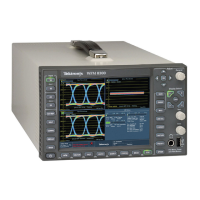Operating B asics Signal Quality Check
Signal Quality Check
The application performs Signal Quality tests that include the following tests:
Area
Option
Description
Signal Quality C heck
Eye Diagram
Checks whether the USB signal is aligned
with its corr
esponding eye diagram
Signal Qual
ity C heck
Signal Rate Measures th
e inverse of the average bit-time
that gives the transmission rate of the USB
signal
Signal Quality C heck
PairedJKJitter
Measures the jitter time for paired (JK next to
KJ) differ
ential data transition
Signal Qu
ality C heck
Paired KJ Jitter
Measures
the jitter time for paired (KJ next to
JK) differential data transition
Signal Quality C heck Consecutive Jitter
Measures
the jitter at e very consecutive data
bit calculated using the signal rate
Signal Quality Check EOP Width Measures the width of the end-of-packet of
a USB signal
Signal Quality C heck Cross-Over voltage
Measures the voltage at which the D+ voltage
crosses the D– voltage
Signal Quality C heck
Rising Edge Rate
The Rising Edge/Slew rate in (V/μs) is
calcu
latedusingtheRisetimeas
Rising Edge Rate = Amplitude / Rise Time
Where Amplitude is the peak-to-peak
ampli
tude for the corresponding signaling
rate and the Rise time is calculated based on
the high level of the inner vertical eye height
refe
rence levels
Sig
nal Quality Check
Falling Edge Rate
The
Falling Edge/Slew rate in (V/μs) is
calculated using the Fall time as
Falling Edge Rate = Amplitude / F all Time
Whe
re Amplitude is the peak-to-peak
amplitude for the corresponding signaling
rate and the Fall time is calculated based on
th
e lower level of the inner vertical eye height
reference levels
Signal Quality C heck Monotonic Property (For High
Speed only)
Measures the Monotonic Signal if the data
[i] < data [i-1] where data[l] is the record
p
oint in the acquired waveform. This is in
the case of consistently increasing (rising
Slope) only. If the data [i] > data [i-1] in case
o
f consistently decreasing )falling Slope) and
never increasing in v alue where i ranges from
0 to n, the signal I is said to be monotonic
xxx
32 TDSUSB2 Universal Serial Bus Measurements Package

